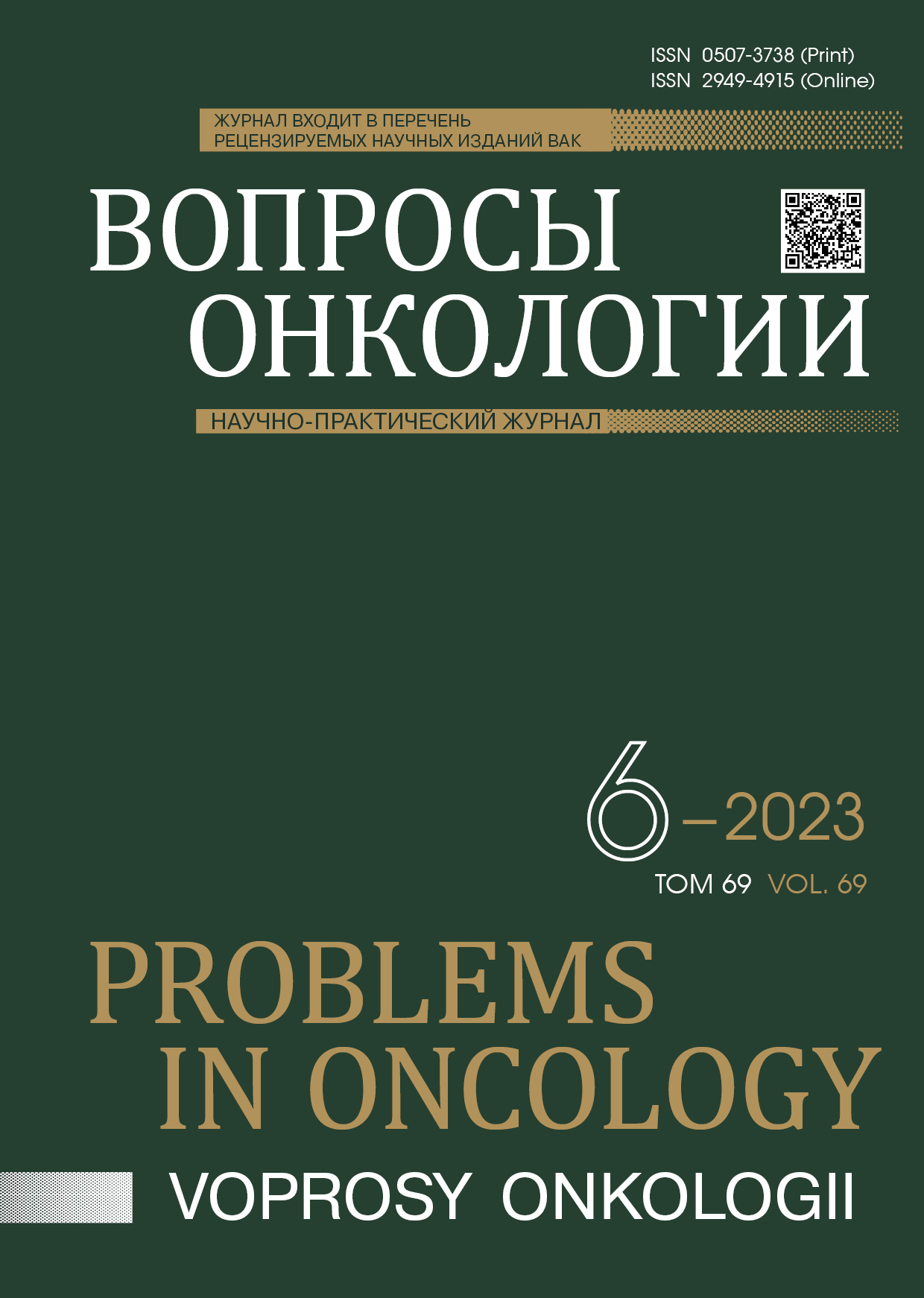Abstract
The purpose of the study was to explore the possibilities of a new hybrid technology of SPECT-CT in the diagnosis of metastatic regional lymph nodes (LN) in patients with breast cancer (BC). There were examined 57 primary patients. All patients underwent axillary lymph node dissection and /or biopsy of sentinel LN followed by histological examination of the material. Metastases in LN were verified in 20 (35%) of 57 examined patients. Sensitivity, specificity and overall accuracy of SPECT-CT in the combined use of anatomical and functional criteria for assessing the state of LN accounted for 75%, 89% and 84%, respectively. Sensitivity of SPECT-CT in the diagnosis of massive axillary LN lesion (more than two) in breast cancer patients was 95%. Thus, the new hybrid technology of SPECT-CT, combining functional and anatomical techniques for assessing of pathological changes, is highly informative in the diagnosis of metastatic lesions of regional LN in patients with breast cancer.References
Канаев С.В., Новиков С.Н., Криворотько П.В. и др. Комбинированное использование сцинтиграфии с 99тТс-технетрилом и эхографии в диагностике метастатического поражения лимфатических узлов у больных раком молочной железы // Вопр. онкол. - 2013 - Т. 59. - № 1 - С. 59-64.
Alvarez S., Anorbe E., Alcorta P. et al. Role of sonography in the diagnosis of axillary lymph node metastases in breast cancer: a systematic review // Am. J. Roentgenol. - 2006. - Vol. 186. - P 1342-1348.
Buscombe J.R., Cwikla J.B., Thakrar D.S., Hilson A.J.W. Scintigraphic imaging of breast cancer: a review // Nucl. Med. Commun. - 1997. - Vol. 18. - P. 698-709.
Crippa F., Gerali A., Alessi A. et al. FDG-PET for axillary node staging in primary breast cancer // Eur. J. Nucl. Med. Mol. Imaging - 2004. - Vol. 31 (Supl 1). - S97-S102.
Madeddu G., Spanu A. Use of tomographic nuclear medicine procedures, SPECT and pinhole SPECT, with cationic lipophilic radiotracers for the evaluation of axillary lymph node status in breast cancer patients // Eur. J. Nucl. Med. Mol. Imaging. - 2004. - Vol. 31 (supl 1). - S23-S34.
Mariani G., Bruselli L., Kuwert T.,et al. A review on the clinical uses of SPECT/CT // Eur. J. Nucl. Med. Mol. Imaging. - 2010. - Vol. 37. - P. 1959-1985.
Mathijssen I.M., Strijdhorst H., Kiestra S.K. et al: Added value of ultrasound in screening the clinically negative axilla in breast cancer // J. Surg. Oncol. - 2006. - Vol. 94. - P. 364-367.
Peare R., Staff R.T., Heys S.D.: The use of FDG-PET in assessing axillary lymph node status in breast cancer: a systematic review and meta-analysis of the literature // Breast Cancer Res. Treat. - 2010. - Vol. 123. - P. 281-290.
Schillaci O., Scopinaro F., Donneti M., et al. Detection of axillary lymph node metastases in breast cancer with Tc-99m tetrofosmn scintigraphy // Int. J. Oncol. -2002. - Vol. 20. - P. 483-487.
Spanu A., Tanda F., Dettori G., et al. The role pf 99mTc-tetrofosmin pinhole-SPECT in breast cancer non-palpable axillary lymph node metastases detection // Q. J. Nucl. Med. - 2003. - Vol. 47. - P. 116-128.
Taillefer R. Clinical applications of 99mTc-sestamibi scintigraphy// Semin. Nucl. Med. - 2005. - Vol. 35. - P. 100-115.
Tiling R., Tatsch K., Sommer H. Technetium-99m-sesta-mibi scntimammography for the detection of breast carcinoma: comparison between planar and SPECT imaging // J. Nucl. Med. - 1998. - Vol. 39. - P. 849-856.
Zgajnar J., Hocevar M., Podkrajsek M. et al. Patients with preoperatively ultrasonically uninvolved axillary lymph nodes: a distinct subgroup of early breast cancer patients // Breast Cancer Res. Treat. - 2006. - Vol. 97. - P. 293-299.
Wahl R., Stegel B.A., Coleman R.E., Gatsonis C.G. Prospective multicenter study of axillary nodal staging be positron emission tomography in breast cancer: a report of the staging breast cancer with PET study group // J. Clin. Oncol. - 2004. - Vol. 22. - P. 277-285.
All the Copyright statements for authors are present in the standart Publishing Agreement (Public Offer) to Publish an Article in an Academic Periodical 'Problems in oncology' ...
